

Table of contents
- The best remedies against algae
- Correct size of the aquarium
- Correct location
- A good water quality
- Appropriate light
- filter
- flooring
- plant stock
- fish stock
- Sufficient CO2
- amount of food
- fertilization
- cleaning
- water change
- Alleged home remedies
- Conclusion
It is important to remember that anything you do to change the conditions in the aquarium will usually have more than one effect. So something that helps initially can turn around later and cause something else. Eliminating one type of algae can encourage the growth of another. It is a cycle and there is no ultimate home remedy for all algae.
Algae always indicate a nutrient imbalance. They live on the nutrients that are not consumed by other "roommates". This not only has disadvantages, but also means that the fish are not receiving too high a dose of macronutrients. In order for the surplus of nutrients to be broken down, ideal conditions must be created. The best home remedy is to create, set up, set up and maintain the aquarium in such a way that everything fits together harmoniously. Just one factor that doesn't fit throws everything out of balance. If several come together, the situation worsens. The algae, which are always present, use this. They begin to multiply en masse.
The best remedies against algae
So the best way is to create ideal conditions in the aquarium. Chemistry is out of the question, but there are enough ways and means to achieve this. Chemical agents usually only bring about a short-term improvement. As long as the cause of the algae growth is not eliminated, the algae will keep coming back.
Correct size of the aquarium
Correct size of the aquarium in small tanks, algae are much more common. It is therefore better to use a larger one. Of course, the size depends on the stocking. Small fish take up less space than large ones. Beginners should start with 100 liters and with easy to keep fish. Anyone who discovers this hobby for themselves will quickly need a larger tank and this usually increases over the years.
Correct location
The aquarium should be bright but not sunny. Too much sun promotes algae growth, at least in many species. Diatoms, on the other hand, grow better in less light.
A good water quality
Test drinking water, specifically which nutrients it contains. There are test sets available in stores for this purpose.
Appropriate light
The light determines the nutrient consumption of the plants. The more light there is in the tank, the more nutrients are produced. If there is too much light, the plants will not be able to use it up. With too little light, the plants grow poorly and certainly do not make it. Algae benefit from the oversupply. The light must be reduced, whether daylight or artificial light. More than 12 hours of light are unfavorable, 10 hours are usually sufficient.
filter

Since an aquarium is too small, it has no self-cleaning power. Pollutants are not broken down and nutrient consumption is regulated. The biological balance cannot adjust itself. Filter systems bring relief. A single filter is rarely enough. Two filter systems are better, a biological filter and a mechanical filter. Biological filtration works with millions of microorganisms. With mechanical filters, water is freed from coarse and fine dirt particles, i.e. from faeces and leftover food. In addition, there are a lot of other filters. It is best to get advice on filtering from a specialist.
flooring
Depending on what the aquarium floor is covered with, algae may or may not like it. Blue-green algae prefer to colonize white or light-colored pebbles. If you exchange them for dark ones, the blue-green algae usually disappear as well.
plant stock
An aquarium cannot accommodate enough plants. The more you have in it, the better it is. Plants use up nutrients, the more nutrients, the fewer are left for the algae. Algae and plants are competitors for food. The less plants consume the nutrients, the more algae there is. Fast-growing plants are favourable, even if they have to be cut back from time to time because they have become too big. The number of plant species is also important. The more different, the better. Each plant prefers different nutrients and so they cover a wider range that is consumed. Monoculture is always difficult.
fish stock
Adapt the amount and size of the fish and other creatures to the size of the tank. Too many fish produce too much feces, too many nutrients. Basically, the larger the aquarium, the easier it is to maintain the biological balance, but even a 1,000 liter tank can be overfilled. A certain number of algae eaters is beneficial. These include freshwater crabs, catfish, Amano shrimp (only eat brush algae)
Sufficient CO2
Plants need sufficient CO2 as a basis for nutrition and growth. During the photosynthesis of plants, oxygen is produced. The creatures in the aquarium need this. If there are many plants in the tank, CO2 is quickly consumed, which is why an additional CO2 system makes sense. However, the concentration must not be too high. If the CO2 concentration is too high, it can be reduced by aerating the aquarium using an outflow stone with an air pump.
amount of food
Too much feeding is common. The leftover food falls to the ground, remains and decomposes. Nutrients are released. What the fish have not eaten in the first 10 minutes after feeding is too much. Therefore, when algae infestation often helps to reduce the amount of food.
fertilization
Why fertilize when there are already too many nutrients? The existing macronutrients are often not enough for the plants. They also need micronutrients. They must be supplied, but with caution. There is a special concentration of nutrients in an aquarium. Some nutrients are in excess and some are used up quickly. completely missing. Good fertilizer must fill in the gaps in a targeted manner. To do this, however, you need to know your water parameters.
cleaning
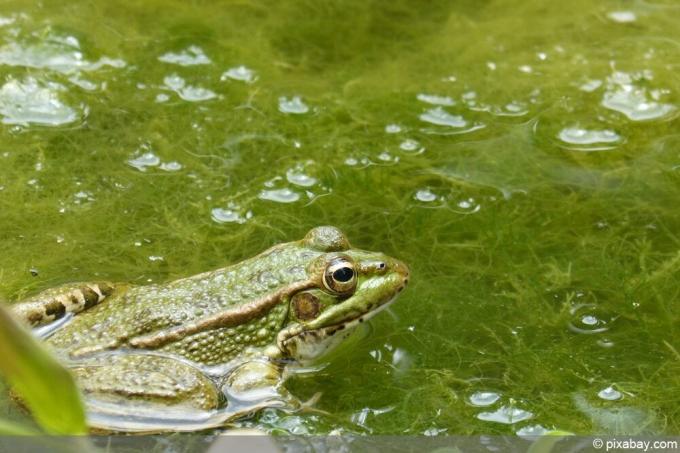
Algae can be removed quite easily manually. In the case of thread algae, it is enough to rummage through the water with an unvarnished stick, the algae get stuck and wrap themselves around it when you change direction. Many algae can be easily wiped off the plants, windows and objects. You can vacuum the floor, and any algae that it contains will be flushed out with it.
water change
When changing the water, the scholars argue. Some swear by taking water weekly if there are problems (25 to 50 percent), others strongly advise against it. Just try it out here. It certainly depends on the composition of the water. Drinking water is not the same as drinking water, there are glaring differences. Depending on the ingredients, changing the water may or may not help and may even make the situation worse.
Alleged home remedies
Of course, there are always tips declared as home remedies on how to combat algae. Often, however, they are only intended to boost sales and do not really bring anything. However, everyone has to make up their own mind. The proof of the pudding is in the eating and necessity is sometimes the mother of invention.
Pieces of granite, slate and basalt in the water, as decoration so to speak, are intended to prevent algae growth. Experienced aquarium owners laugh at this. The stones make the water harder. Some algae do not tolerate it well, but neither do fish and plants.
Coppered floral water should prevent algae growth. Small euro coins in the water protect flower stems from putrefactive bacteria and algae. However, even the smallest amounts of copper are toxic to fish. What works in a flower vase cannot be transferred to an aquarium, at least not to an inhabited one.
Aspirin tablets – 1 tablet in 100 liters of water is said to combat brush algae, and allegedly other algae as well. There are some reports that aspirin is credited with helping. But just as many report exactly the opposite. The only thing that helps here is to try again, but always keep in mind: “Ask about the risk and side effects Your..." Aspirin is a case in point of, "Everything has its two sides." Filter bacteria will also eliminated.
straw extract – “…well-dried barley or wheat straw (4 to 5 hands full per 100 liters of water) in a very perforated plastic bag grab it, tie it up and hang it in the aquarium.” The turbidity will probably not last long, the effect should be after 2 to 3 days insert. It is important to suck off the algae and change the water. The straw must be renewed every 10 days. In ponds, this method works quite well. It can work in the aquarium. There is one disadvantage, the bag is not exactly a visual highlight and the larger the pool, the larger the bag.
Conclusion
Those who create optimal conditions will have few problems with algae. You can't avoid them completely, it's not even necessary. Even in the ultimate aquarium, algae can be introduced. It is important that they do not multiply too much. The best way to do this is by taking the steps outlined above. Real home remedies are rare. Although there is a lot of experimentation and numerous remedies help at first glance, they all have side effects. In one way or another, these remedies take revenge. It is better to ensure that the water is clean, that the plants and fish are healthy, that it is cleaned regularly and that the water is changed is that there are not too many fish in the tank, but plenty of plants, that not too much is fed and that the filters function. All this in combination ensures a well-functioning aquarium.
 garden editorial
garden editorial I write about everything that interests me in my garden.
Learn more about algae in the pond
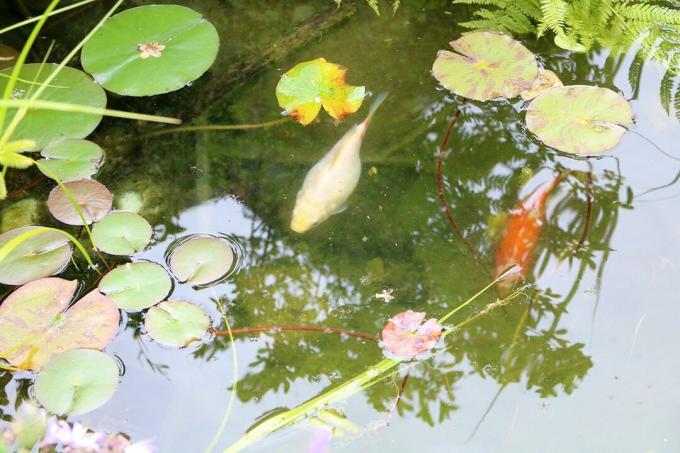
Floating algae in the pond: 10 tips for removing them
Algae infestation is not only unsightly to look at, but can also pose a threat to aquatic animals and plants. For this reason, it is advisable to always remove floating algae - read here how this works best!
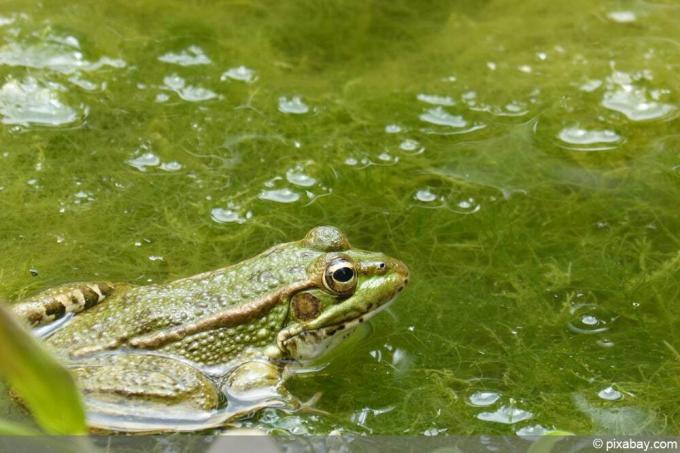
Algae eater in the pond: 5 hungry pond fish
Algae growth in the garden pond not only looks unsightly, but excessive growth can tip the entire ecosystem over. In this article we will tell you which types of fish, snails and mussels like to eat algae and what else helps against the "green plague".
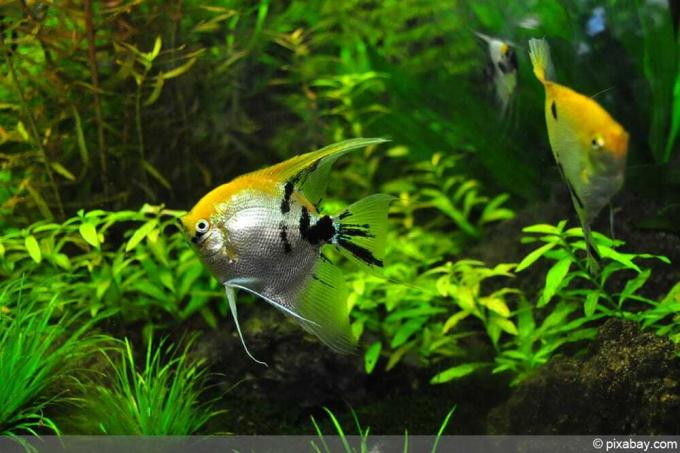
Combat thread algae in the aquarium
The right countermeasures must be taken at an early stage to ensure that the thread algae in the aquarium do not grow too rampant and become a nuisance. Otherwise, the aquatic plants can severely disturb the sensitive ecosystem of the aquarium and also negatively affect the visual appearance.
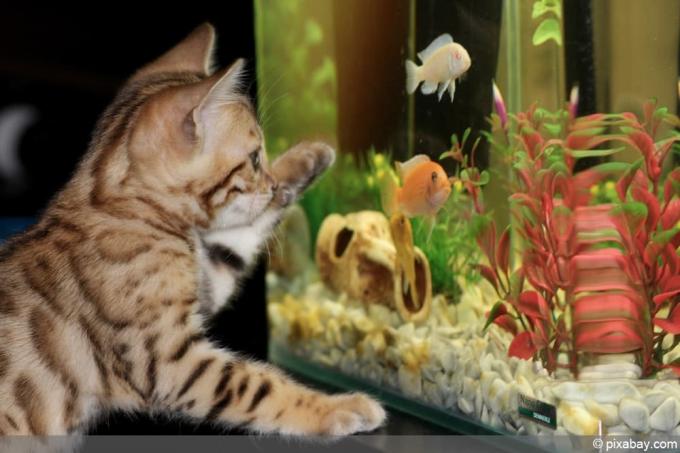
Get rid of green algae in the aquarium properly
Green algae occur in every aquarium. This is normal and part of it. It can even speak for a particularly good water quality. Only a massive increase in algae caused by too much light and too many nutrients is not normal. The green coloring and turbidity of the water means nothing other than that the biological balance has gotten out of joint. There are different green algae, also with quite different requirements. However, all benefit from an excess of food and can best be combated by depriving them of food.

Natural remedies against thread algae
Algae in the garden pond are an absolute nuisance, but can hardly be avoided. Besides, they are useful too. They serve as food for microorganisms and also produce vital oxygen. It gets annoying when they multiply en masse.

Combat diatoms in the aquarium - in 5 steps
Diatoms occur mainly in newly set up freshwater and seawater aquariums, but can also appear during normal aquarium operation. This is mainly due to the initially high concentration of silicates.

